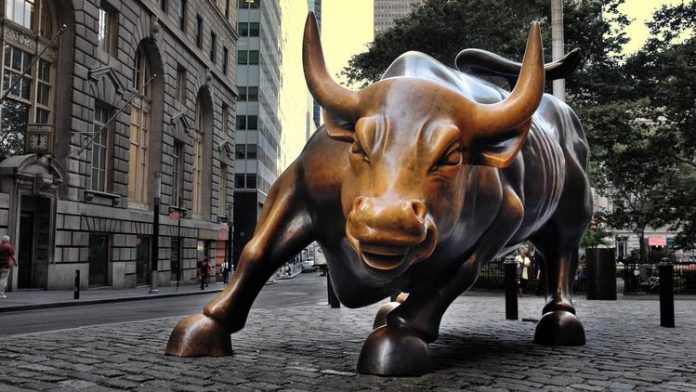Back in March of this year, the 10 Year-3 Month Treasury Yield Spread (T10Y3M) inverted. It’s the first time that’s happened since late 2006/early 2007, right before the 2008 financial crisis.
Historically, this particular spread has been widely used as a way to gauge the health of the yield curve. More specifically, economists use it to find out if a recession is on the horizon.
Whenever the T10Y3M inverts (meaning the difference between the 10-year and 3-month yields drops below 0), economic hardship typically follows.
Not right away, though. It usually takes a year or two before the real damage is done.
But whenever an inversion of this spread does occur, investors start to get nervous. They know that by and large, the economy becomes a ticking time bomb when the spread narrows.
When it drops into negative territory, it’s time to head for the hills.
And since March, when the yield spread first inverted in 2019, we’ve largely been in an up-and-down climate. The spread jumped back above 0 in April, before plunging once again by mid-May.

As of this morning, though, the T10Y3M is almost level once again, clocking in at -0.01%.
Prodded along by a recent statement from New York Fed President John Williams, the spread is making a push towards positive numbers.
“When you have only so much stimulus at your disposal, it pays to act quickly to lower rates at the first sign of economic distress,” said Williams, causing some analysts to believe that a 50-point rate cut is likely on July 31st.
As a result, yields shifted, drawing closer together in a bullish manner.
Since speaking yesterday, Williams tried to downplay his remarks, suggesting that he didn’t just show the Fed’s hand to investors the world over.
“This was an academic speech on 20 years of research. It was not about potential policy actions at the upcoming FOMC meeting.”
Sure thing, John.
In his statement, Williams revealed that “potential policy actions” will likely be coming in response to the “first sign of economic distress.”
In this case, that distress comes in the form of a T10Y3M inversion that’s lingered for months now, refusing to head north on its own devices.
So, instead of waiting, the Fed is reacting – slashing rates yet again to push the spread above sea level.
Moreover, expert analysts now suggest that Fed Chairman Jerome Powell has even more reason to cut rates now that we found ourselves in the midst of a disappointing earnings season.
“The estimates for the third quarter are somewhere just below zero. This is not earnings growth. This is just struggling to stay at zero,” said James Bianco, president of Bianco Research, a market research company.
“They’re only down a couple of 10ths, but they are negative. And, they’ve been in a downtrend of several months.”
In addition, he’s also concerned about those darn 10-year and 3-month Treasury yields.
“It’s telling you that money is too tight for four or five months,” Bianco said.
“The sooner the Fed fixes it, the better. A 50 basis-point cut fixes it better than a 25 basis-point cut.”
And while Bianco could be 100% accurate in his economic forecast, he’s missing one key point:
It’s not the Fed’s job to worry about quarterly earnings.
However, that hasn’t stopped them from doing so over the last few years. In fact, you could argue that their knee-jerk rate adjustments are what got us into this mess in the first place.
The practice of over-manipulation has created a “boom and bust” market chock-full of mini-bubbles. The big “pop” hasn’t arrived quite yet – though we saw a preview of it late last year – but I can assure you, at this rate, it’s only a matter of time before Powell (or his successor) ends up toppling the whole house of cards on accident.
Because what they don’t seem to understand is that the T10Y3M inversion is NOT a problem. It’s simply a symptom.
“Fixing” the economy via more monetary easing won’t get the job done. If anything, it’ll delay the inevitable and stack the deck even further.
So, yes, the Fed’s tomfoolery at the end of this month will likely “un-invert” the T10Y3M, as investors rejoice the fact that debt has gotten inexplicably cheaper.
But in the end, it won’t fix the rotten, festering root of it all – insane credit expansion enabled by a perma-low rate environment.
Instead, the Fed will simply slap a veneer on the whole mess and smile, hoping that investors don’t figure out the whole charade.
Because as long as stocks keep rising, Wall Street will stay fat and happy. And that, more than anything, is what motivates our all-knowing, never-overstepping central bank.








